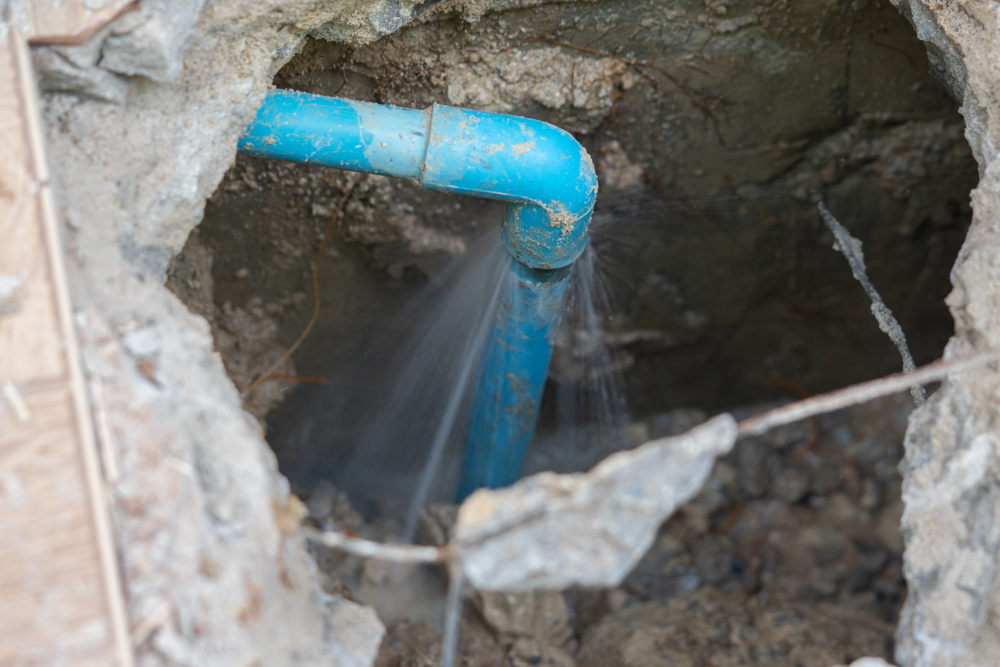Just how to Check If Your House Has a Surprise Leak
Just how to Check If Your House Has a Surprise Leak
Blog Article
Right here in the next paragraph you might get a bunch of excellent material in regards to Finding hidden leaks.

Early detection of leaking water lines can mitigate a prospective disaster. Some tiny water leaks might not be visible.
1. Analyze the Water Meter
Checking it is a guaranteed method that helps you find leakages. If it moves, that suggests a fast-moving leakage. This suggests you might have a slow leakage that could also be underground.
2. Inspect Water Intake
Assess your water bills and also track your water intake. As the one paying it, you ought to notice if there are any type of inconsistencies. If you spot sudden changes, regardless of your consumption being the same, it implies that you have leakages in your plumbing system. Keep in mind, your water costs need to fall under the exact same variety on a monthly basis. An abrupt spike in your expense shows a fast-moving leak.
On the other hand, a consistent increase monthly, despite the same behaviors, shows you have a sluggish leak that's also gradually intensifying. Call a plumber to extensively check your residential or commercial property, especially if you really feel a cozy location on your flooring with piping beneath.
3. Do a Food Coloring Test
When it comes to water intake, 30% originates from commodes. Examination to see if they are running correctly. Drop specks of food color in the tank as well as wait 10 minutes. If the color somehow infiltrates your bowl throughout that time without flushing, there's a leak between the container and also dish.
4. Asses Exterior Lines
Do not neglect to inspect your outside water lines as well. Ought to water seep out of the link, you have a loose rubber gasket. One tiny leak can squander heaps of water and spike your water bill.
5. Examine the scenario and also evaluate
House owners should make it a practice to examine under the sink counters and also also inside cabinets for any type of bad odor or mold and mildew development. These 2 warnings show a leakage so timely interest is called for. Doing regular inspections, even bi-annually, can save you from a significant issue.
Extra significantly, if you understand your home is already old, keep a watchful eye on your heating units, hoses, pipelines etc. Look for discolorations as well as weakening as the majority of pipelines and home appliances have a life span. They will also normally wear away as a result of tear and also use. If you think leaking water lines in your plumbing system, do not wait for it to escalate. Call a professional plumber immediately so you don't wind up with a terrible mess in your house.
Early detection of dripping water lines can mitigate a potential calamity. Some tiny water leakages might not be visible. Examining it is a proven method that helps you discover leaks. One small leakage can throw away lots of water and surge your water bill.
If you suspect leaking water lines in your plumbing system, don't wait for it to escalate.
WARNING SIGNS OF WATER LEAKAGE BEHIND THE WALL
PERSISTENT MUSTY ODORS
As water slowly drips from a leaky pipe inside the wall, flooring and sheetrock stay damp and develop an odor similar to wet cardboard. It generates a musty smell that can help you find hidden leaks.
MOLD IN UNUSUAL AREAS
Mold usually grows in wet areas like kitchens, baths and laundry rooms. If you spot the stuff on walls or baseboards in other rooms of the house, it’s a good indicator of undetected water leaks.
STAINS THAT GROW
When mold thrives around a leaky pipe, it sometimes takes hold on the inside surface of the affected wall. A growing stain on otherwise clean sheetrock is often your sign of a hidden plumbing problem.
PEELING OR BUBBLING WALLPAPER / PAINT
This clue is easy to miss in rooms that don’t get much use. When you see wallpaper separating along seams or paint bubbling or flaking off the wall, blame sheetrock that stays wet because of an undetected leak.
BUCKLED CEILINGS AND STAINED FLOORS
If ceilings or floors in bathrooms, kitchens or laundry areas develop structural problems, don’t rule out constant damp inside the walls. Wet sheetrock can affect adjacent framing, flooring and ceilings.
https://www.servicemasterbyzaba.com/blog/how-to-detect-water-leakage-in-walls/

I'm just very serious about Hacks to detect leaks and I am hoping you liked my piece. Don't hesitate to take the opportunity to promote this blog posting if you enjoyed reading it. I appreciate reading our article about Locating water leaks.
Report this page